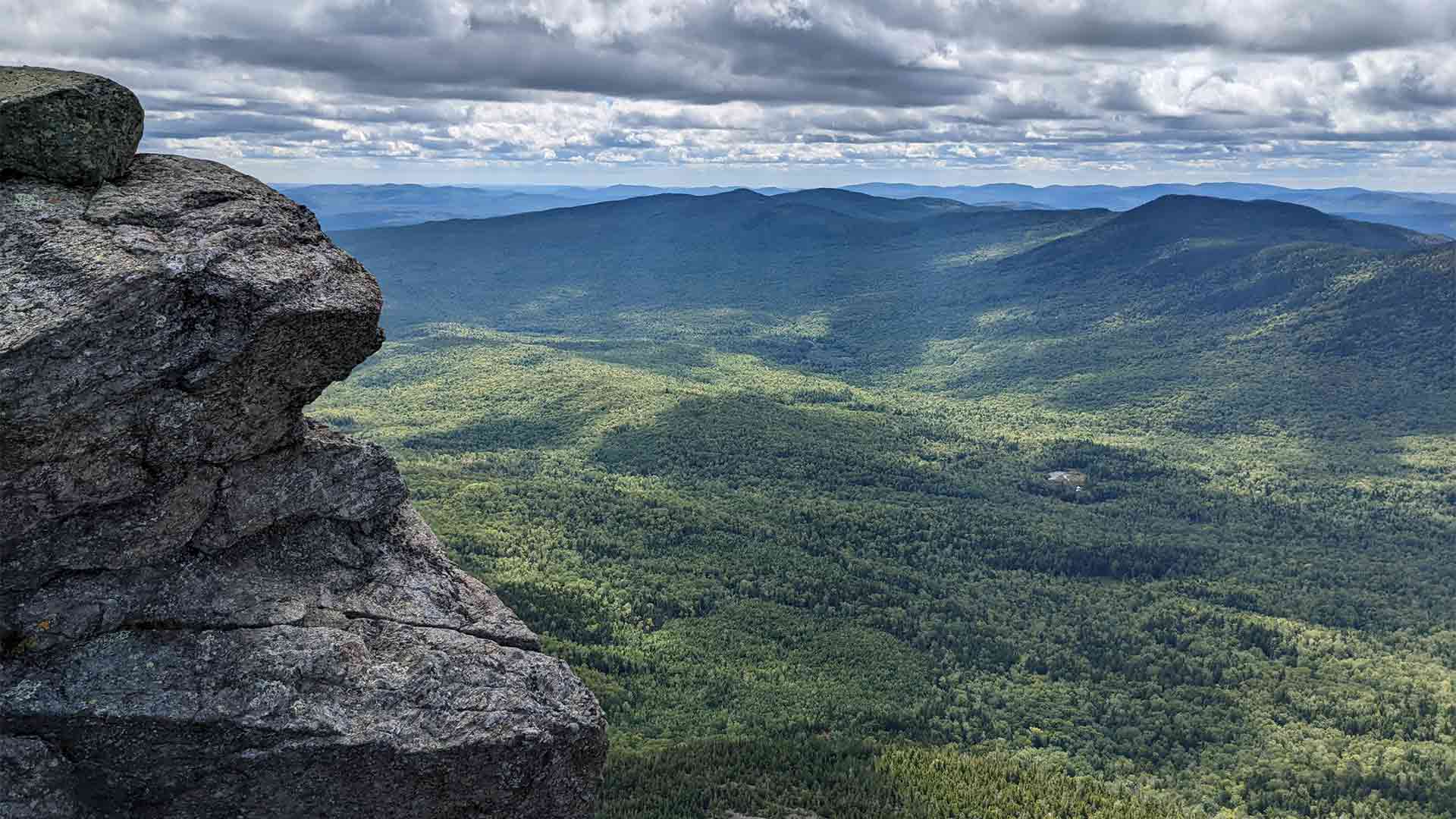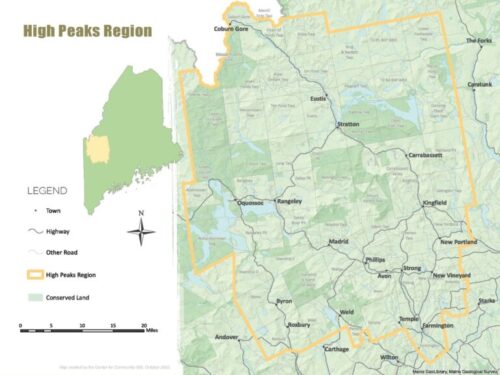The High Peaks Region is not only home to ten of Maine’s mountain peaks over 4,000 feet, with its alpine flora and fauna and spectacular views, but also to vast working forests, rich wildlife habitats, and numerous fast-flowing streams that are recognized as prime spawning habitats of the endangered sea-run Atlantic salmon.
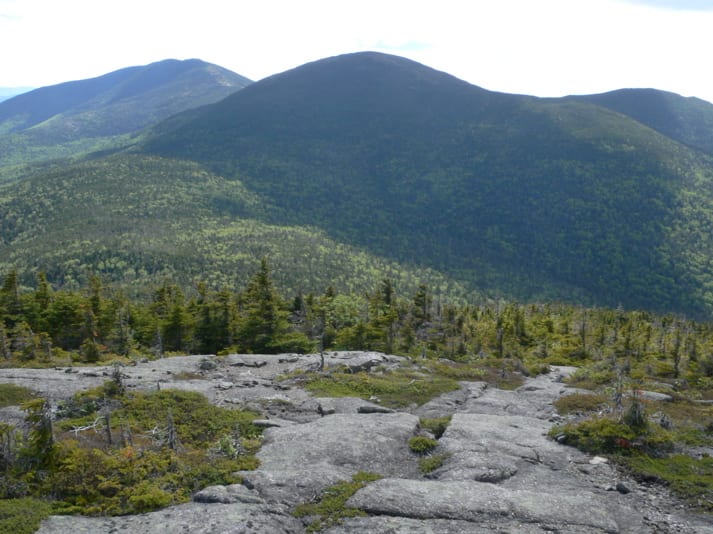
Mount Redington
Elevation: 4010 ft
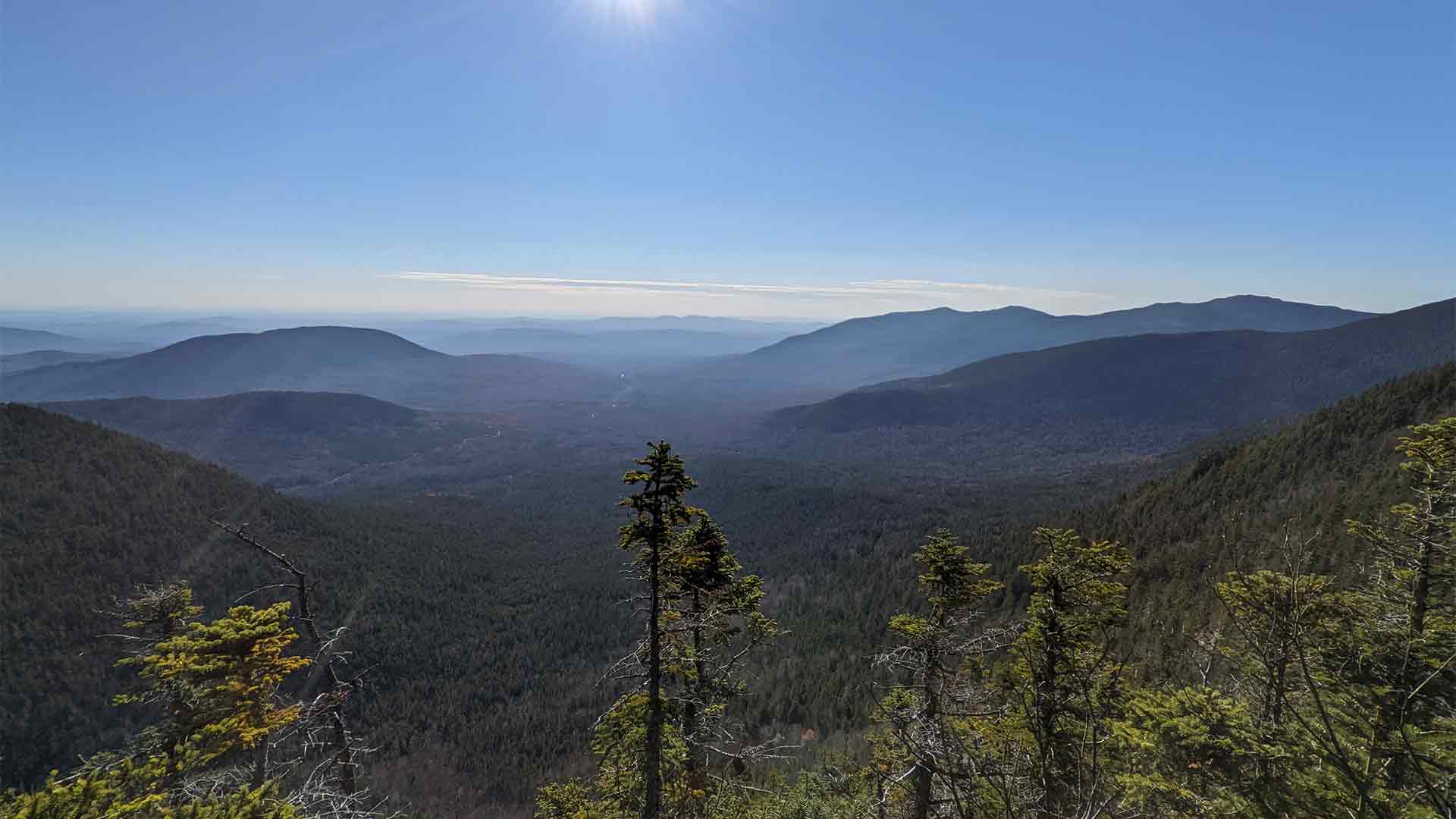
Spaulding Mountain
Elevation: 4010 ft
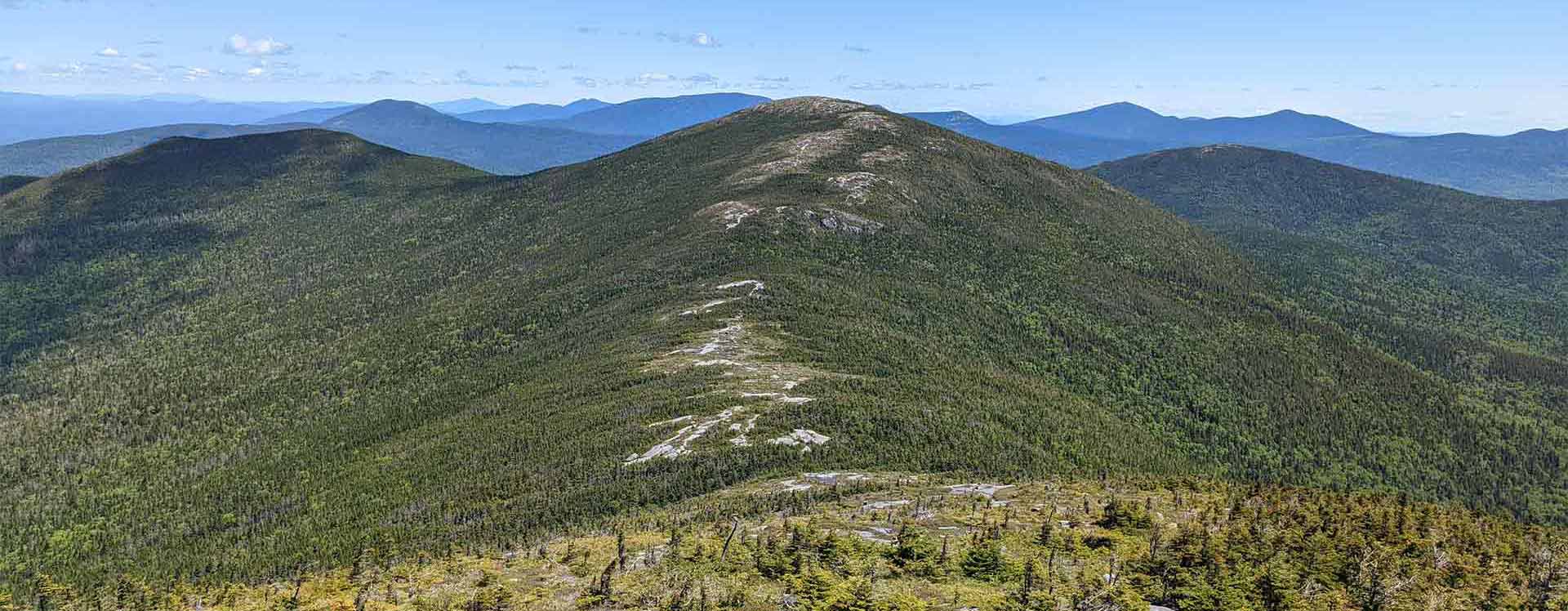
Saddleback Horn
Elevation: 4023 ft
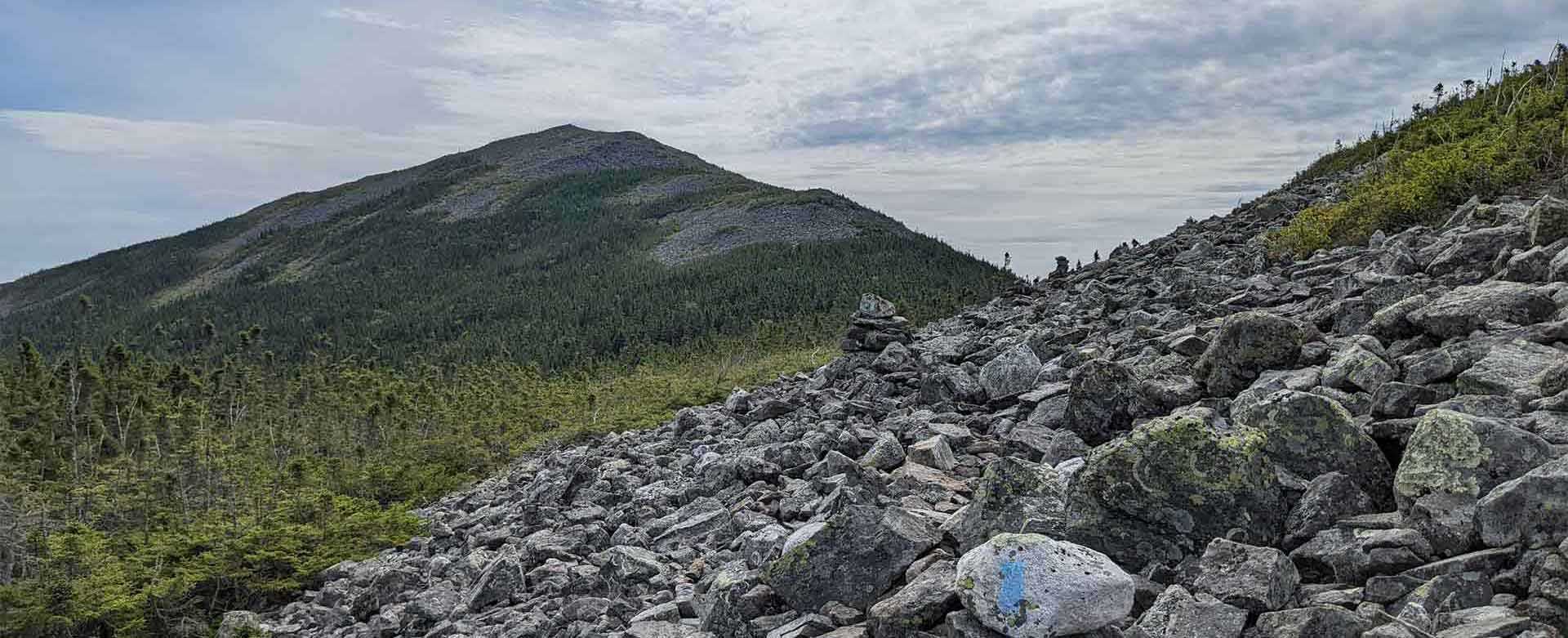
Mount Abraham
Elevation: 4050 ft
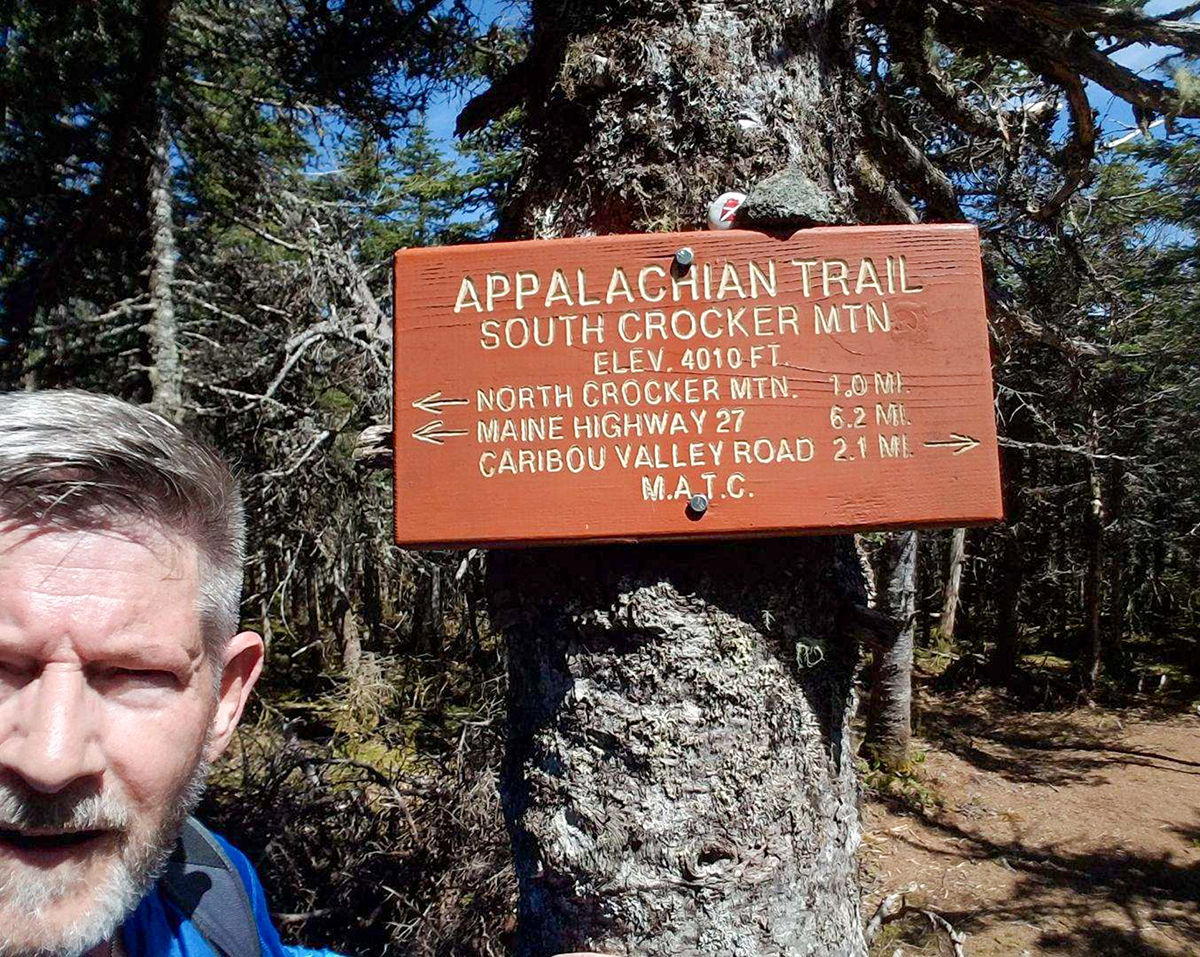
South Crocker Mountain
Elevation: 4050 ft
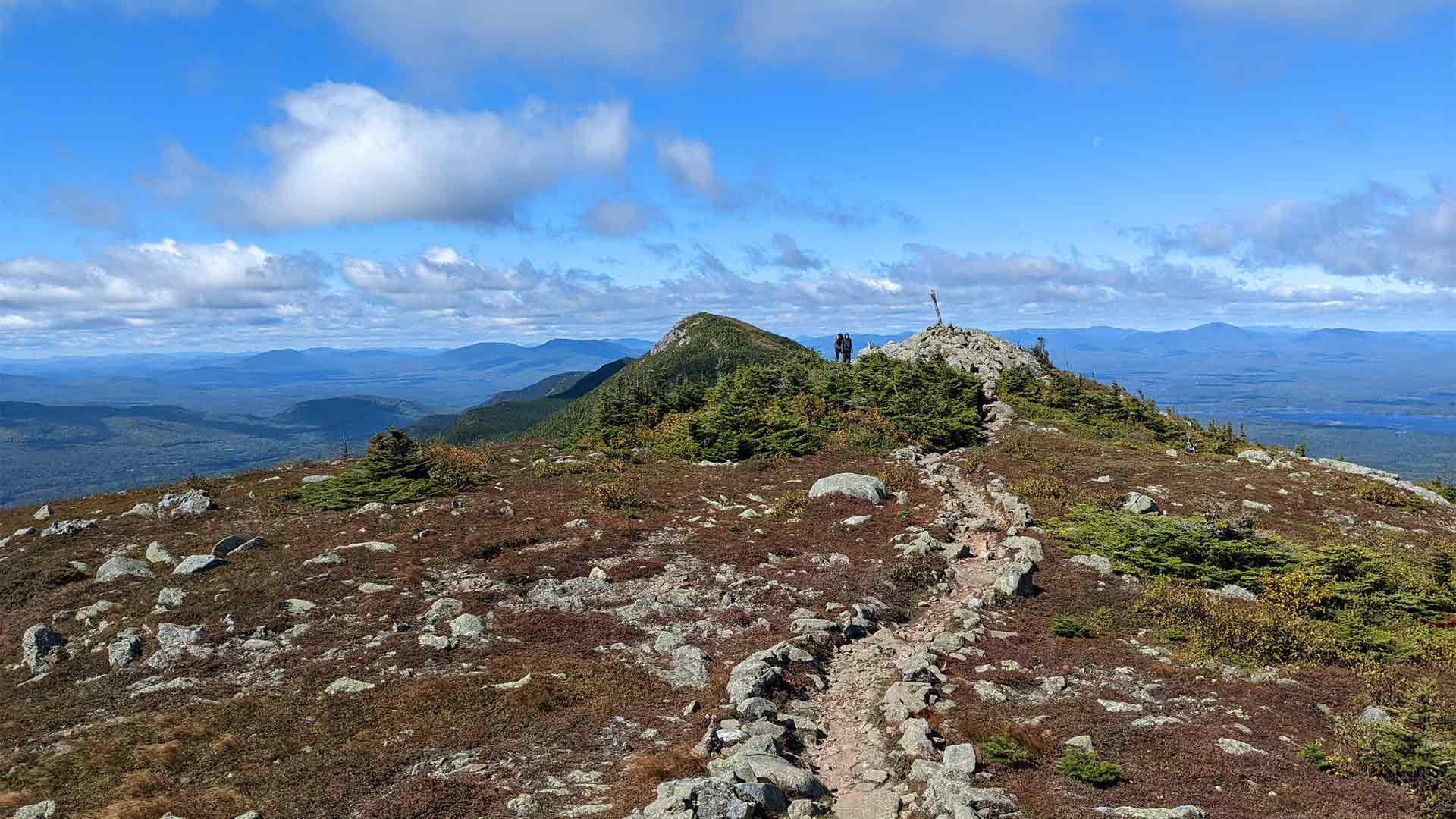
Bigelow, Avery Peak
Elevation: 4090 ft
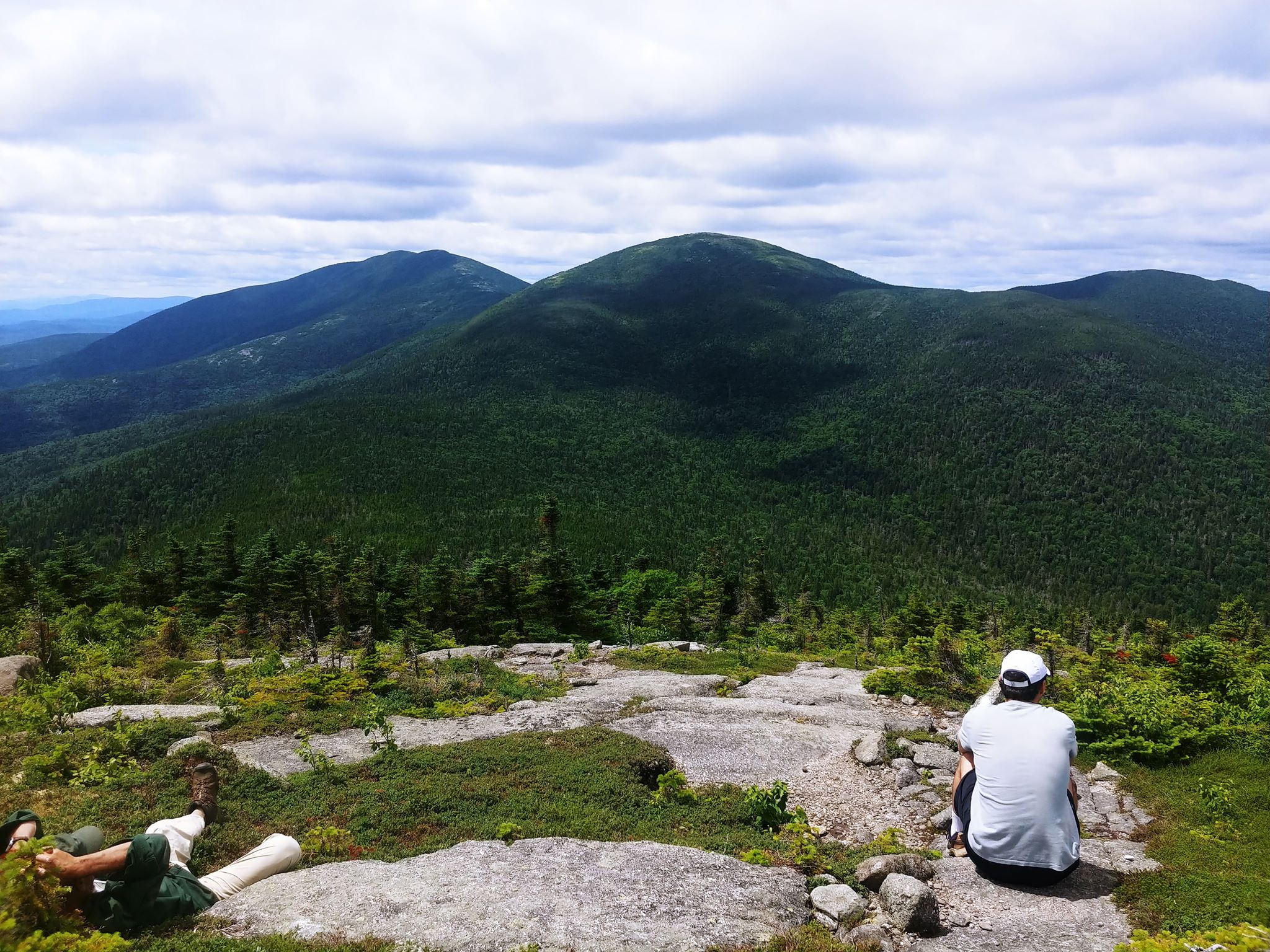
Saddleback Mountain
Elevation: 4120 ft

Bigelow, West Peak
Elevation: 4145 ft
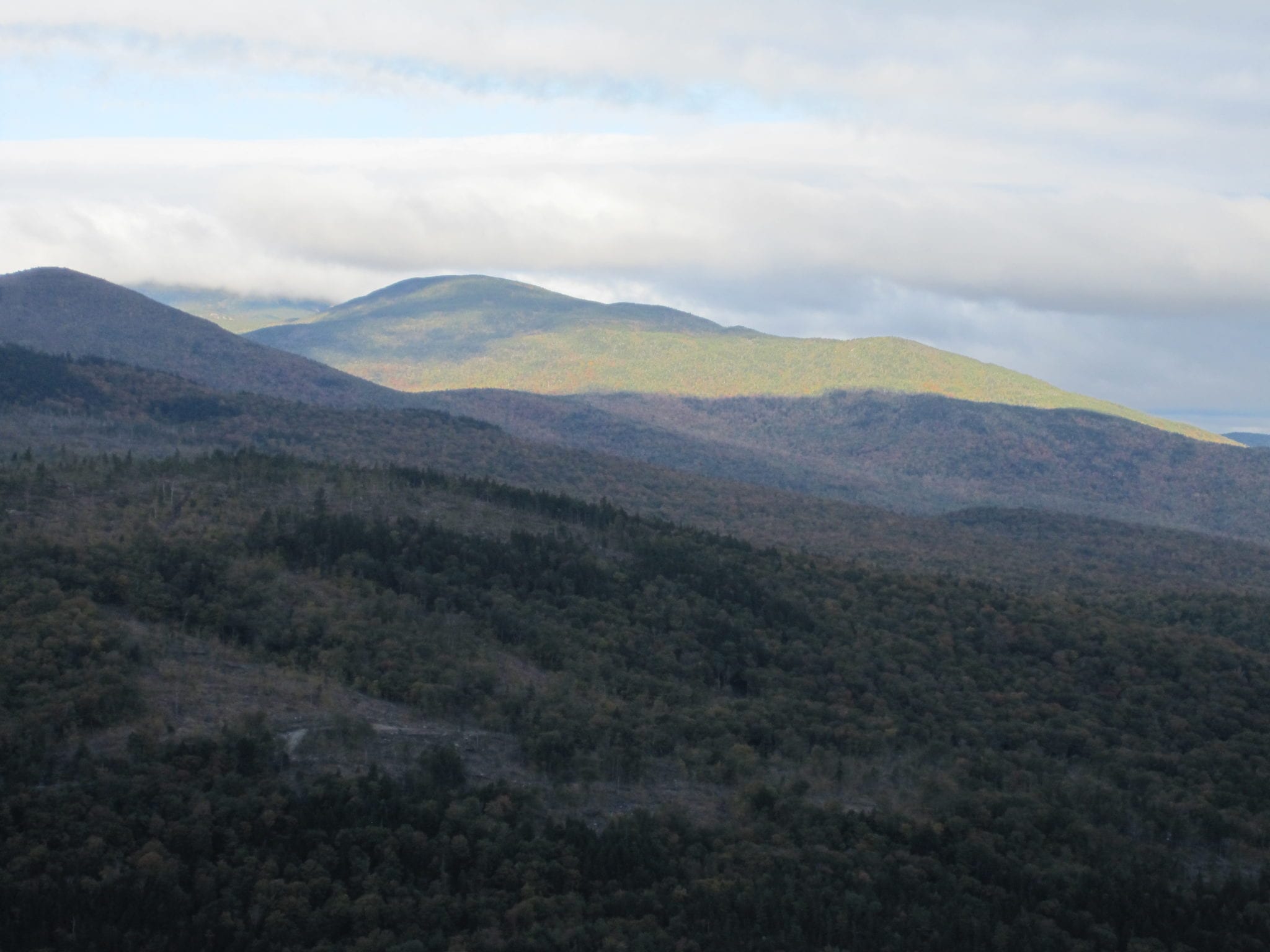
Crocker Mountain
Elevation: 4228 ft
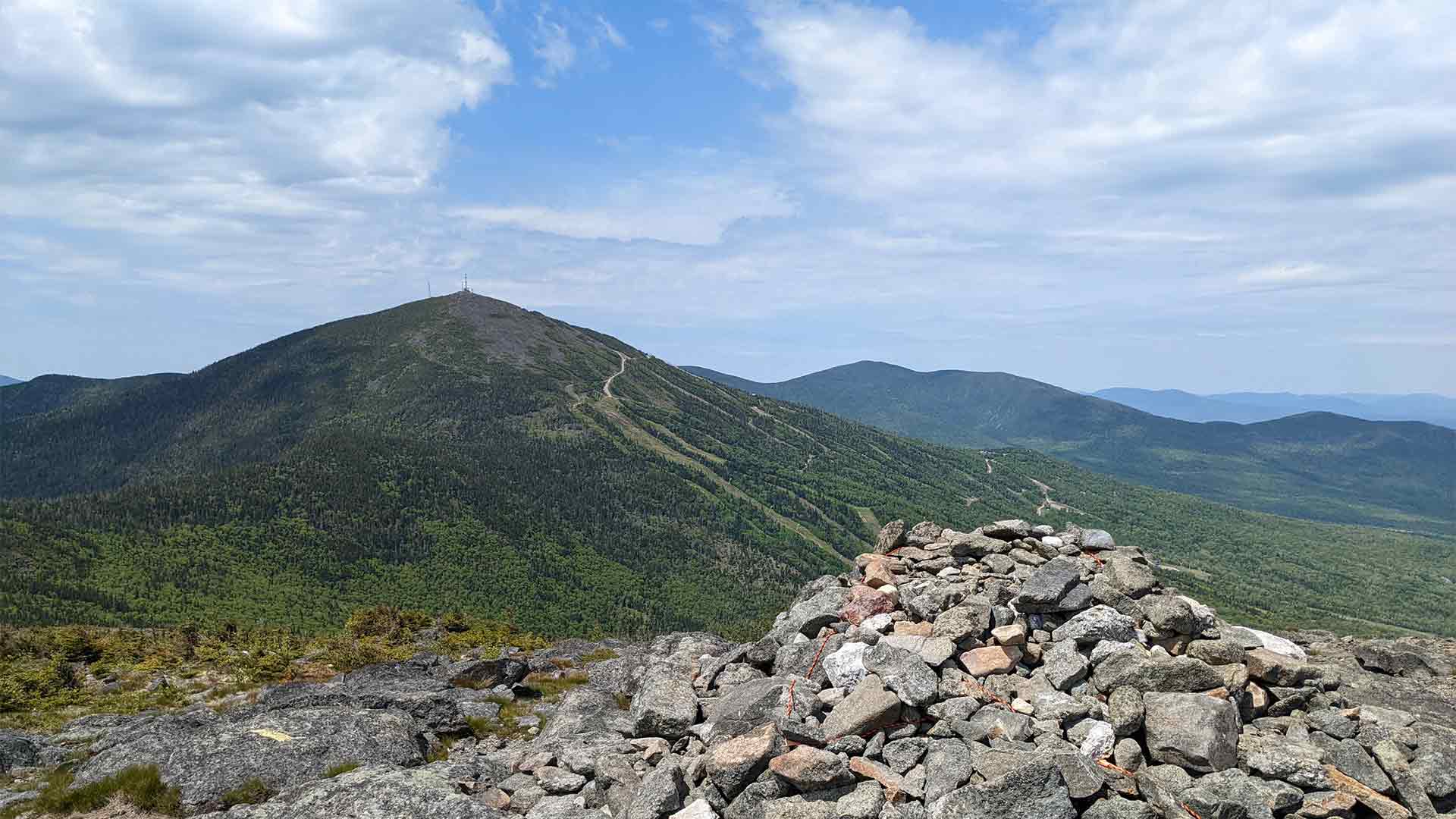
Sugarloaf Mountain
Elevation: 4250 ft

